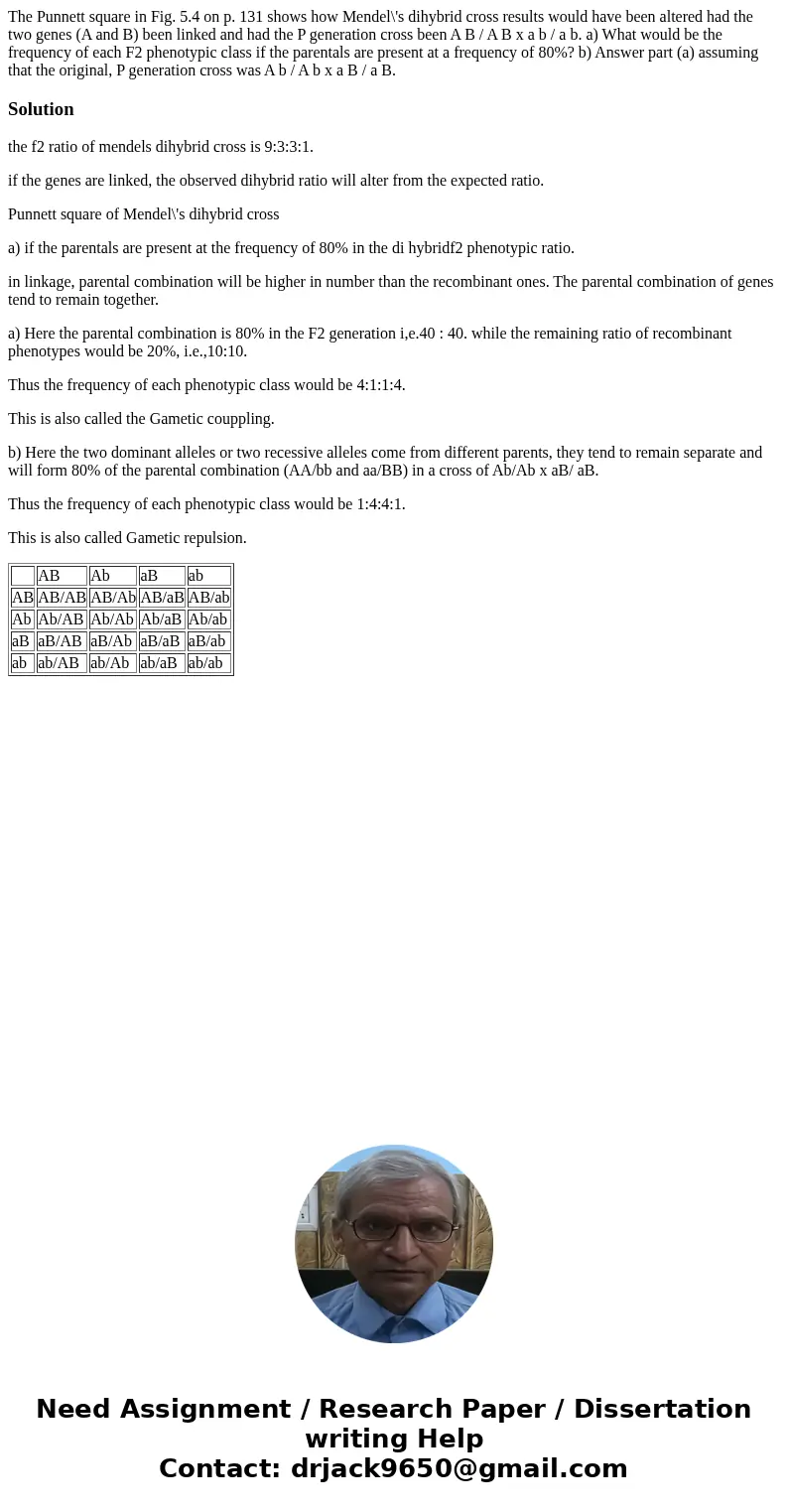The Punnett square in Fig 54 on p 131 shows how Mendels dihy
The Punnett square in Fig. 5.4 on p. 131 shows how Mendel\'s dihybrid cross results would have been altered had the two genes (A and B) been linked and had the P generation cross been A B / A B x a b / a b. a) What would be the frequency of each F2 phenotypic class if the parentals are present at a frequency of 80%? b) Answer part (a) assuming that the original, P generation cross was A b / A b x a B / a B.
Solution
the f2 ratio of mendels dihybrid cross is 9:3:3:1.
if the genes are linked, the observed dihybrid ratio will alter from the expected ratio.
Punnett square of Mendel\'s dihybrid cross
a) if the parentals are present at the frequency of 80% in the di hybridf2 phenotypic ratio.
in linkage, parental combination will be higher in number than the recombinant ones. The parental combination of genes tend to remain together.
a) Here the parental combination is 80% in the F2 generation i,e.40 : 40. while the remaining ratio of recombinant phenotypes would be 20%, i.e.,10:10.
Thus the frequency of each phenotypic class would be 4:1:1:4.
This is also called the Gametic couppling.
b) Here the two dominant alleles or two recessive alleles come from different parents, they tend to remain separate and will form 80% of the parental combination (AA/bb and aa/BB) in a cross of Ab/Ab x aB/ aB.
Thus the frequency of each phenotypic class would be 1:4:4:1.
This is also called Gametic repulsion.
| AB | Ab | aB | ab | |
| AB | AB/AB | AB/Ab | AB/aB | AB/ab |
| Ab | Ab/AB | Ab/Ab | Ab/aB | Ab/ab |
| aB | aB/AB | aB/Ab | aB/aB | aB/ab |
| ab | ab/AB | ab/Ab | ab/aB | ab/ab |

 Homework Sourse
Homework Sourse